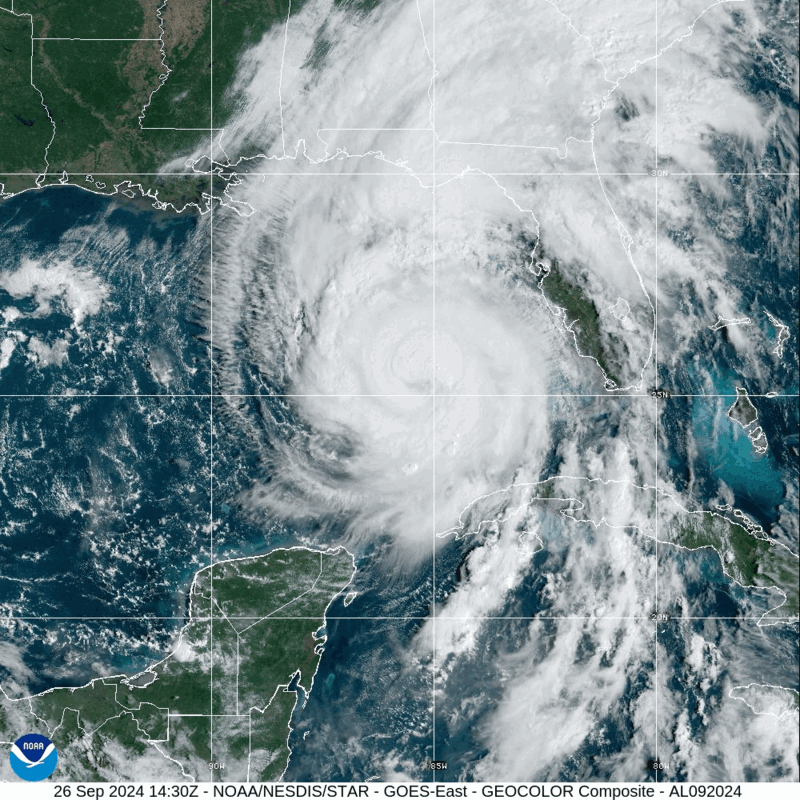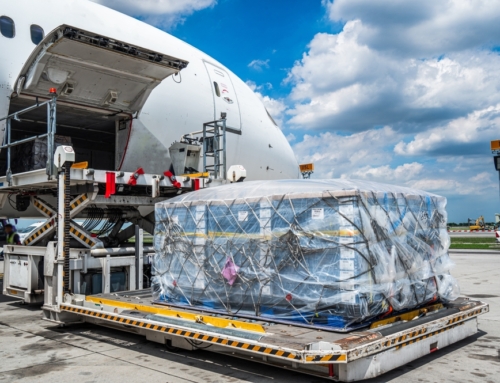HELENE UPDATES – SEPTEMBER 27, 2024
Helene continues to disrupt critical infrastructure across Florida, Georgia, South Carolina, North Carolina, and now Virginia, affecting ports, airports, railroads, and power grids.
Ports
- Port Tampa Bay: Remains closed for all vessel traffic due to high winds. Landside operations continue in a limited capacity, but commercial shipping and cruise schedules are significantly impacted.
- Georgia and the Carolinas: Coastal ports, such as Savannah, Charleston, and Wilmington, are either preparing for shutdowns or operating at limited capacity due to storm surges and flooding.
- Virginia: The Port of Virginia has restricted vessel traffic and is facing access issues due to flooding and storm surges, with limited container handling until safety inspections are conducted.
Airports
- Florida: Several airports, including Tampa International Airport, are closed, with widespread flight cancellations and delays extending across the northern and central parts of the state.
- Georgia: Hartsfield-Jackson Atlanta International Airport has reported over 100 flight cancellations and delays .
- South Carolina and North Carolina: Regional airports are experiencing delays and cancellations, especially in coastal areas.
- Virginia: Airports such as Norfolk International Airport and Richmond International Airport are reporting significant delays and cancellations, as the storm moves into the region.
Class 1 Railroads & Intermodal Ports
- CSX and Norfolk Southern, which service the Southeast, are facing operational delays due to flooding and debris on the tracks. Both rail networks in Georgia, South Carolina, and North Carolina are experiencing disruptions, with Virginia now seeing similar impacts as the storm moves north.
Utility and Power
- Across Florida, Georgia, South Carolina, North Carolina, and Virginia, nearly 3 million households are without power. Utility crews from neighboring states have been deployed to assist in power restoration, with Virginia facing power outages affecting approximately 500,000 households.
Government and Emergency Updates
- FEMA: Deployed personnel and resources to all affected states, including Virginia, to assist with relief efforts. Shelters have been opened, and FEMA is coordinating with local agencies to assess damage.
- Georgia Emergency Management and Homeland Security (GEMA/HS): Opened emergency shelters across southern Georgia, and utility services are focusing on restoring power.
- Virginia Department of Emergency Management (VDEM): Issued flood warnings across central and coastal regions, with shelters opened in areas vulnerable to storm surge and flooding.
- National Weather Service (NWS): Predicts ongoing heavy rainfall in Virginia, with up to 10 inches expected, which could result in flash flooding and river overflows.
As Hurricane Helene continues to move through the Southeast and into Virginia, federal, state, and local agencies are coordinating response and recovery efforts to mitigate long-term disruptions in transportation and logistics.
HURRICANE HELENE – SEPTEMBER 26, 2024
Hurricane Helene is growing in strength as it barrels towards the western coast of Florida. Key ports in the U.S. Gulf and East Coasts are in the high-risk zone for heavy rains, strong winds, and flash floods resulting from the category 3, potentially category 4, hurricane.
SUPPLY CHAIN IMPACT
Currently, Hurricane Helene is causing widespread disruptions across several key U.S. transportation and logistics hubs, particularly in Florida, with broader impacts in Georgia, South Carolina, and North Carolina.
Florida
Ports: Port Tampa Bay has suspended all inbound and outbound vessel traffic due to strong winds. While landside operations continue on a limited basis, the port’s shipping channels remain closed, significantly impacting both commercial and cruise operations.
Airports: Several major airports, including Tampa International Airport, have announced closures as the storm approaches. Airports in central and northern Florida are also expected to experience delays and potential closures as the storm progresses.
Class 1 Railroads & Intermodal Ports: Railroads such as CSX and Norfolk Southern, which service the Southeast, are likely to experience delays due to storm surges, flooding, and debris blocking the tracks. No detailed reports are available yet, but intermodal freight movement across Florida is already seeing disruptions.
Georgia, South Carolina, North Carolina
Georgia: The Port of Savannah, one of the busiest container ports, has faced delays due to flooding and high winds, while inland rail and trucking hubs around Atlanta are also experiencing slower operations. Airports in southern Georgia have reported cancellations and delays.
South Carolina: Charleston is heavily affected, with its port seeing temporary closures due to storm surges. Rail connections and nearby highways are also impacted by flooding. Additionally, Charleston International Airport has reported flight delays and cancellations.
North Carolina: The Port of Wilmington is facing significant disruptions due to flooding and wind damage, with submerged rail lines and highways hampering the movement of goods. Charlotte Douglas International Airport has also seen delays as a result of the storm, though less severe than coastal regions.
Authorities in all states are actively monitoring the situation and working to mitigate the impact on logistics operations. Full resumption of services will depend on the extent of damage and weather conditions as recovery efforts progress.
STRATEGIES FOR SHIPPERS
A range of options are available for businesses to mitigate disruptions to their supply chain should Hurricane Hilary impact freight movement.
Collaboration and Partnership: Partner with a freight forwarding company that maintains a reliable and diverse carrier network. A freight forwarder will leverage relationships within its network to mitigate supply chain disruption by using alternate carriers, transportation modes, and trade routes.
Warehousing and Inventory Control: A key strategy to mitigate shipping disruptions is utilizing warehousing and inventory management. Stockpiling inventory in a secure warehouse offers businesses a safety net to sustain operations during periods of uncertainty. Proximity to key markets and implementing agile inventory management practices can help optimize supply and demand fluctuations.
Leverage Technology: Advancements in technology, including data analytics and real-time tracking systems, offer businesses enhanced visibility and efficiency in supply chain management. By leveraging these tools, companies can optimize processes, reduce bottlenecks, and respond quickly to supply chain changes. Businesses must be proactive to mitigate potential supply chain disruptions.
NEED HELP WITH SHIPMENTS?
Contact [email protected] to speak with Green’s freight experts.
Stay up-to-date on freight news with Green’s Weekly Freight Market Update by following us on LinkedIn. For continuous updates, make sure to check out our website at greenworldwide.com.






